Why Study Soils
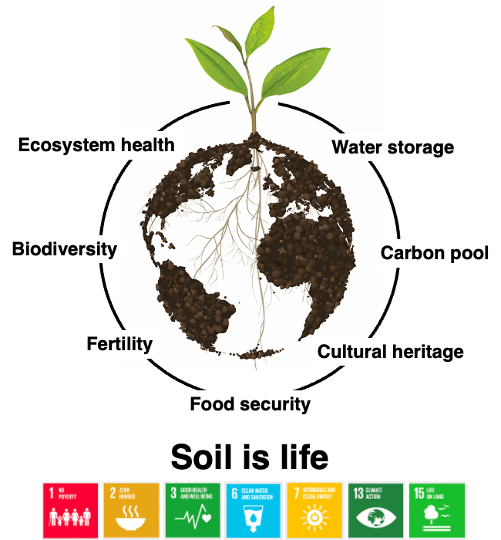
Soil is much more than just dirt; it’s a dynamic, living system that underpins life on our planet and serves as the foundation for plants by anchoring their roots and providing essential nutrients for growth. Acting at the intersection of the atmosphere, lithosphere, hydrosphere, and biosphere, soil plays a pivotal role in interactions between air, water, rock, and living organisms. It is not only the medium through which water and nutrients cycle but also a critical resource sustaining ecosystems and human life.
Soil is central to achieving seven of the United Nations’ Sustainable Development Goals (SDGs). It supports SDG 1 (No Poverty) by underpinning people’s livelihoods, SDG 2 (Zero Hunger) by enabling food production, and SDG 3 (Good Health and Well-being) by filtering water and breaking down pollutants. It contributes to SDG 6 (Clean Water and Sanitation) through water purification, SDG 7 (Affordable and Clean Energy) by hosting biomass production, SDG 13 (Climate Action) by acting as a carbon sink, and SDG 15 (Life on Land) by sustaining biodiversity and preventing land degradation.
Understanding soil is fundamental to appreciating one of Earth’s most essential and interconnected resources. By recognizing its vital role in sustainable development, we can better protect and manage this invaluable asset for current and future generations.
Soil plays a vital role in our ecosystem. It comprises minerals, organic matter, water, air, and a wealth of living organisms supporting plant life and contributing to the environment. The mineral portion of soil originates from weathered rock.
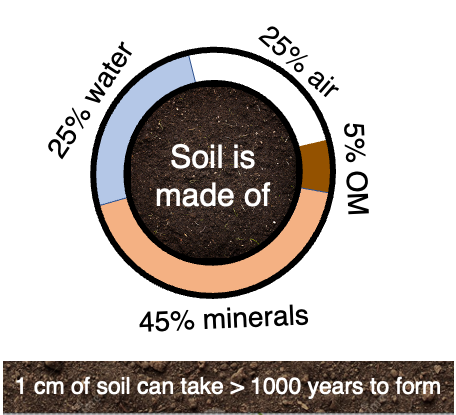
This mineral composition is responsible for the soil’s texture, ranging from coarse sand to fine silt and clay. Organic matter from decomposed plants and animals enriches it with essential nutrients that promote healthy plant growth. Water and air fill the spaces between soil particles with water and air, creating a habitat where roots can grow and various organisms can thrive, from earthworms to microbes. Soil is a dynamic ecosystem essential for our agroecosystems and environment. Understanding its components helps us appreciate its role in supporting life.
Soil is a vibrant ecosystem teeming with life. It hosts an incredible diversity of microorganisms and micro and macro fauna, all of which contribute significantly to nutrient cycling and overall soil health, making soil an essential component of our environment and supporting various forms of life above and below the ground. Understanding and preserving soil health is crucial for maintaining ecological balance and ensuring the sustainability of our planet.
Soil formation is a slow and fascinating process that takes place over thousands of years. It is shaped by six critical factors, which Vasily Vasilyevich Dokuchaev described in the 1880s and Hans Jenny refined in the 1940s. These factors include:

Soil is formed as a function of climate (cl), organisms (o), relief (r), parent material (p), time (t) and human activities.
Climate
Climate influences the rate of weathering and organic matter decomposition, determining how quickly soil forms.
Organisms
Organisms, including plants, animals, and microbes, contribute organic matter and help break down minerals, enriching the soil.
Relief
Relief, or the landscape’s shape, affects water drainage and erosion, leading to soil depth and composition variations.
Parent material
Parent material, the underlying geological material, provides the mineral content and initial structure of the soil.
Time
Over time, these factors interact, creating distinct soil layers, each with its characteristics, and continuously shaping the soil’s ability to support life.
Human Activity
We as humans as a species have a disproportionate effect on our environment, which of course includes soils. For thousands of years, the human practices of foraging, hunting, farming and fire use has changed the landscape and the soils within them.
Not all soils are the same; in fact, they vary widely depending on where they are found. From rich, dark soils in fertile valleys to sandy, dry soils in deserts, each type has its own properties and functions. These differences affect everything from how plants grow to how water is absorbed and stored. Understanding the diversity of soils helps us manage land resources more effectively and appreciate the unique qualities of different environments.
Soils can be grouped into Orders, Suborders, Great Groups, Subgroups, Families and Series. Order is the broadest of these collections, and Series is the narrowest. Due to global soil variation, most countries and regions will have their own classification. The Australian Soil Classification consists of 15 unique soil Orders.
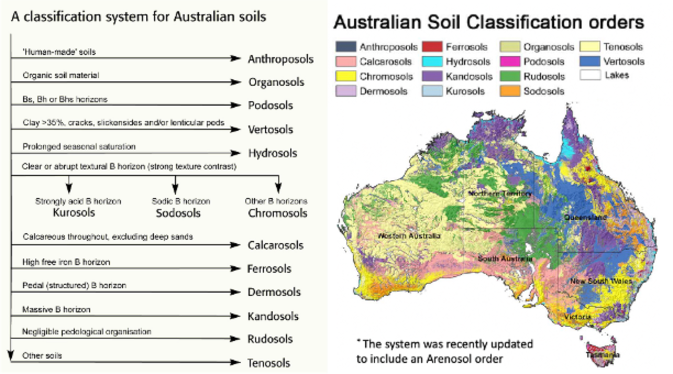
Australian soils are ancient and weathered. In contrast, Europe and America experienced significant glaciation during the last ice age, which shaped their landscapes and contributed to deeper, nutrient-rich soils. Australia, having received little glaciation, has thinner, nutrient-poor soils. The country’s arid environment, marked by low rainfall and high temperatures, produces little organic matter. While this presents challenges for agriculture, it also drives the evolution of Australia’s unique flora and contributes to its high biodiversity.
Soil is essential for supporting biodiversity and regulating environmental processes within natural ecosystems. It provides a habitat for countless organisms, ranging from tiny microbes to burrowing animals, and serves as a reservoir for water and nutrients.
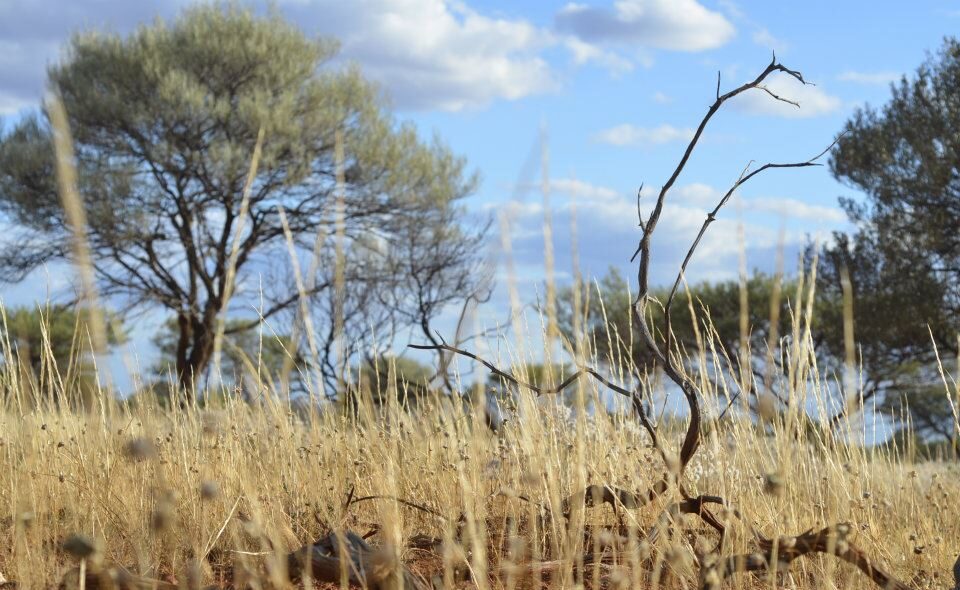
Healthy soils play a vital role in ecosystem stability, filtering water, storing carbon, and cycling nutrients. Preserving these natural soils is essential for maintaining the balance and resilience of our planet’s ecosystems.
In agroecosystems, soil serves as the foundation for food production, supplying the essential nutrients and structure required for crops to thrive. Farmers depend on healthy soils to grow the food, fibre, and fuel necessary to sustain human life.
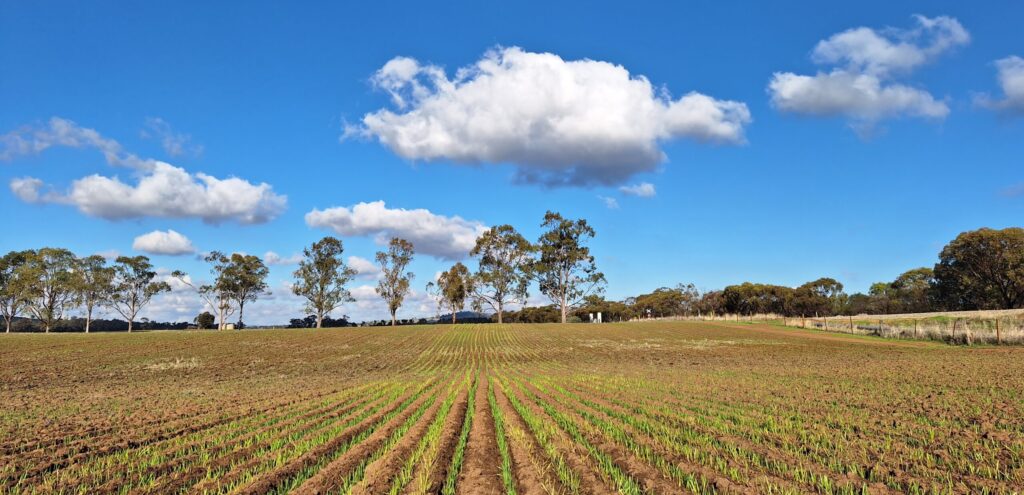
Intensive agriculture can deplete soil nutrients and degrade its structure, causing erosion and reduced fertility. Understanding the role of soil in agriculture is essential for developing sustainable agroecological farming practices that protect this vital resource for future generations.
Numerous initiatives are underway to protect and enhance soil health globally and in Australia. The United Nations Food and Agriculture Organisation (FAO) has recognized the importance of soil by establishing World Soil Day (5th of December) and the Global Soil Partnership, which promotes sustainable soil management practices worldwide.
In Australia, the National Soil Strategy ensures that soil is valued and sustainably managed, supporting agricultural productivity and environmental resilience. Programs like the National Soil Carbon Research and Development, the Australian Government’s Smart Farms Program and the National Landcare Program provide funding and support for farmers and communities to adopt best practices in soil conservation and regeneration. All are focused on developing innovative solutions to improve soil performance, ensuring that soils remain a vital resource for future generations